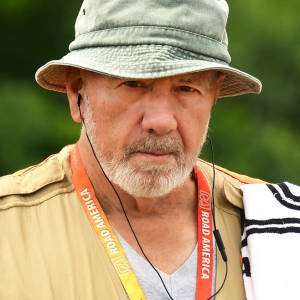FADING COLORS
Autumn colors are fading fast in my neighborhood....only a few patches of yellows/reds/oranges remain. With the rain and wind in the next couple of days, most will be on the ground and ready for Mother Nature to recycle them.
Soybeans are being harvested in the area...this field has yet to be included in the annual combining.
The "hill" in the background is called a Moulin Kame. It's a geological leftover formed at the end of the last glacial period some 10-12,000 years ago. A glacier is not just a pile of ice...it picks up lots of stones and debris as it moves across the land. Of course, it melts from the top down when it warms...and, occasionally, cracks (Moulins) form in the top of the layers and melt water flows downward through the glacial ice taking the gravel particles with it. Imaging an old hour glass.....it's like that. The gravel piles up like sand at the bottom of an hour glass and as the ice melts and moves backward toward its origins, the gumdrop shaped hills of gravel are left behind. geologists come from all over the world to study our county and it's geologic history. A photograph of a kame called Gumdrop Hill near Dundee Mountain (a large kame only a few miles from my abode) is in every glacial geology textbook in the world. It's supposed to be the world's most perfectly formed kame.
We live in what is called the Kettle Moraine...a moraine is naught but a large ridge of gravel pushed up by the glacier as it moved forward. Large chunks of ice break off as the glacier recedes and become buried in the gravel. As the giant ice cubes melt, a depression (a kettle) is left in the gravel. If a kettle happens to be deeper than the water table, it fills with water and becomes a glacial lake. Most lakes in Wisconsin are of this origin.
Minnesota is known as The Land of 10,000 Lakes...the majority of which are glacial lakes. Truth be told, Wisconsin has more than 10,000 lakes...many unnamed.

Comments
Sign in or get an account to comment.


